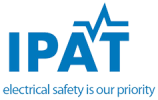Electrical Fatality Statistics
Electrical Fatality Statistics Source: Electrical Fatality Statistics - Health and Safety Authority Each number shown above represents a person killed due to electricity. The actual occurrences that led to the deaths are set out in the enclosed table of Elec_Fatalities_2014. This table gives a brief description of each fatal incident (though details of certain recent fatalities have not yet been included). The Electro Technical Council of Ireland (ETCI), and in particular, their Technical Committee dealing with Safety (TC5), monitors all aspects of electrical safety in the country and also issue several publications on the entire area of electrical safety. Dangers of Electricity Working with electricity can be dangerous. Engineers, electricians, and other workers deal with electricity directly, including working on overhead lines, electrical installation and circuit assemblies. Others, such as office workers, farmers, and construction workers work with electricity indirectly and may also be exposed to electrical hazards. How Electric Current affects the Body Electric Current affects the body when it flows through. The basic unit of current is the amp. This is the current which flows through a resistance of 1 ohm (Ω) when a voltage of 1 volt is applied across it. However, currents as low as thousandths of amps (milliamps) can have an adverse effect on the body. The table below gives an illustration of the types of effects various levels of currents can have on the body. Shock Physiological Effects Electric Current (1 second contact) Physiological Effect 1 mA Threshold of feeling, tingling sensation. 5 mA Accepted as maximum harmless current 10-20 mA Beginning of sustained muscular contraction ("Can't let go" current.) 100-300 mA Ventricular fibrillation, fatal if continued. Respiratory function continues. 6 A Sustained ventricular contraction followed by normal heart rhythm. [...]
